When a Muslin Dress Just Isn’t Enough
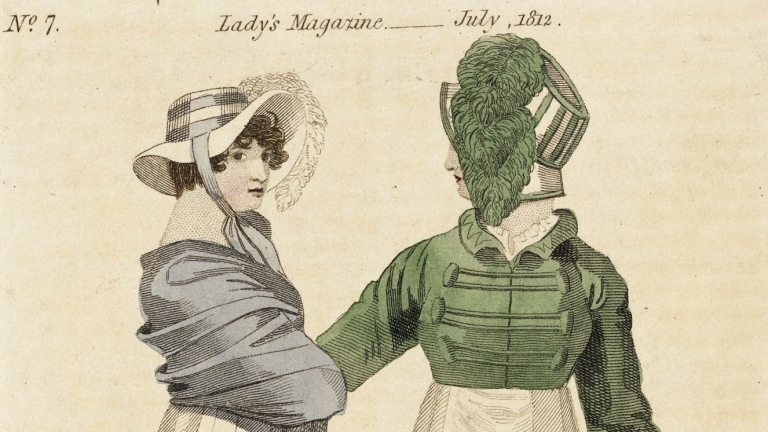
by Jean Martin, First published for the January/February 2013 issue of Finery

For most Regency events and balls, most of us costumers can get away with not wearing period-correct outerwear since we will most likely be indoors, or outdoors during the summer. However, if you want to wear a Regency costume this winter, or at an outdoor event such as the upcoming GBACG Tall Ship Adventure on the Lady Washington in October, what can you wear to keep yourself warm?
Women’s clothing during the Regency era was mostly made of lightweight materials and had few layers, which offered little protection from the cold. Additionally, while women wore warmer clothing in the daytime with higher-collared gowns and long sleeves, they wore dresses with short sleeves and low necklines at night when it is colder. For the ladies, shawls are a must-have accessory, which can be worn over dresses or even outerwear. Light tulle, muslin and silk shawls are particularly suited for evening dresses. The warmest Regency era shawls were primarily made from cashmere wool with beautiful embroidered patterns. It was not unusual for a Regency lady to drape a shawl over her jacket for additional warmth. Draped shawls emphasized the classical effects that women in Regency England strived for.
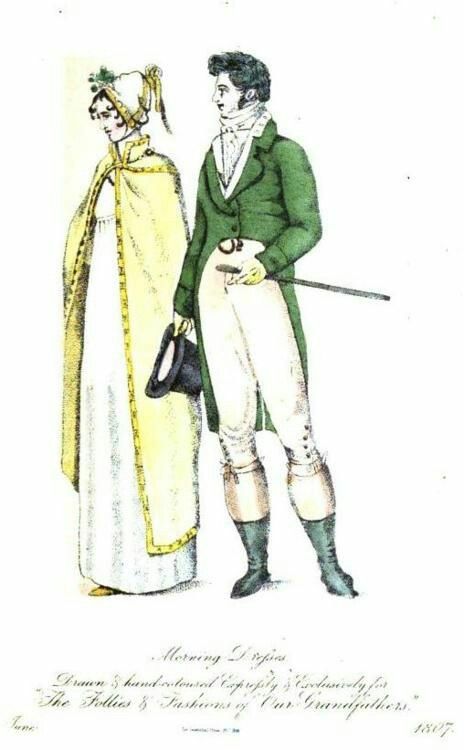
Spencers, tiny bodice-hugging, long-sleeved coats like bolero jackets, were also very chic during the Regency period. They were inspired by a military jacket named after the Second Earl Spencer. Spencers were cut along the same lines as the dresses and generally had long sleeves and high collars. They were made of every kind of material, from kerseymere to silk to velvet and other warmer fabrics. The jacket provided a brighter, bolder and contrasting color to the dress. They can be worn indoors and outdoors and with eveningwear, when they are called canezous. For very cool weather, some spencers were lined with fur. Military touches were in fashion during the Regency and, thus, many spencers and pelisses were covered in decorative braids, tassels, frogging, and cords.
For more warmth, women can wear pelisses and redingotes. Pelisse is a general term for a light overcoat and is quite flexible in design and length. They could be an open or closed garment, with either armholes or sleeves, and floor-length or just below-the-knee. In the winter, they were constructed of heavier material like wools and velvets, and lined or edged with fur. The popular colors for pelisses were golden brown, dark green and blue. The pelisse was normally worn over pale gowns that were visible when worn open at the front.
The Redingote, a derivation of “riding coat,” is a long, lightweight coat or robe-like garment that can be worn both indoors and out. Indoors, it is worn open to reveal the dress beneath, while the outdoor version is made of heavier materials and of darker colors. Although the terms pelisse and redingote are often used interchangeably, the redingote usually features a close-fitted top and flares out at the hemline with a more tailored or military look than a pelisse.
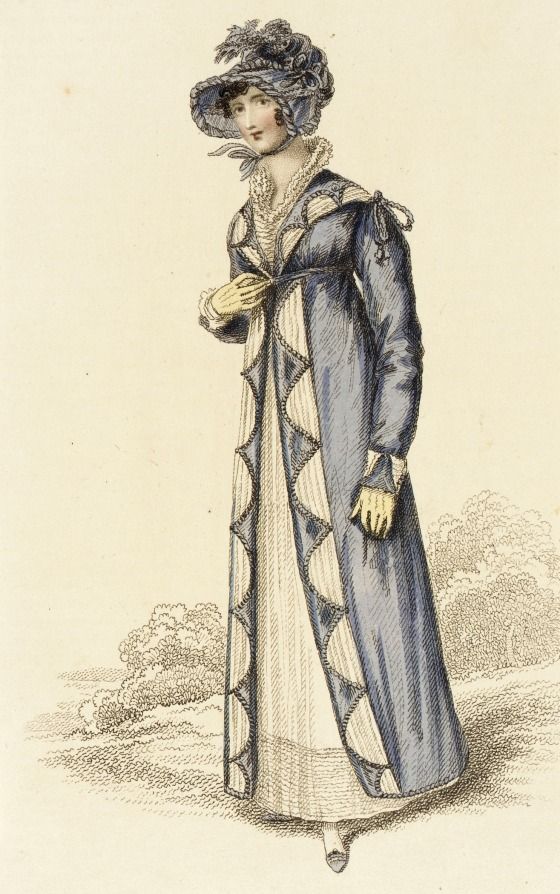
For even colder weather, there are cloaks, capes and mantles for the ladies. Long, hooded cloaks were quite popular in the Regency era and were often made of red fabric. Capes were sleeveless garments, usually hanging over the shoulders and back, and tied at the neck. Mantles were large, long, shapeless cloaks with arm slits and hoods, which were often worn in the evening as part of an ensemble for the opera.
Other fashion accessories to keep ladies warm include tippets, muffs, gloves, undergarments, stockings, bonnets and caps. The tippet was a long slender boa used to wrap the neck area. It was a fancy version of the scarf and could be made of swans down or fur. Muffs of fur and other soft material encased the hands. As for gloves, long ones that reach right up to the sleeves were worn at night while short ones were worn during the day.

Men have an easier time with cold weather Regency fashion as they already have to wear some kind of coat. The tailcoat was the de rigueur article of clothing for men during the Regency era. It was high in the back of the neck and fitted in the back, chest, and abdomen; it had long tails and wide “M-notch” lapels. A tailcoat could be either single or double breasted and could be worn open or closed. It was cut high in front, so that even when closed, a strip of the waistcoat could be seen below it. Since tailcoats were usually made of wool, they’re perfect for chillier days. Color options during the day were numerous, but for the evening, darker colors such as black and navy were the most fashionable.
For even more protection against the elements, gentlemen can wear long overcoats, or greatcoats, whose collar and lapels are styled similarly to the tailcoat. Or for a completely different look, men can also wear military jackets with, of course, accompanying military clothing.
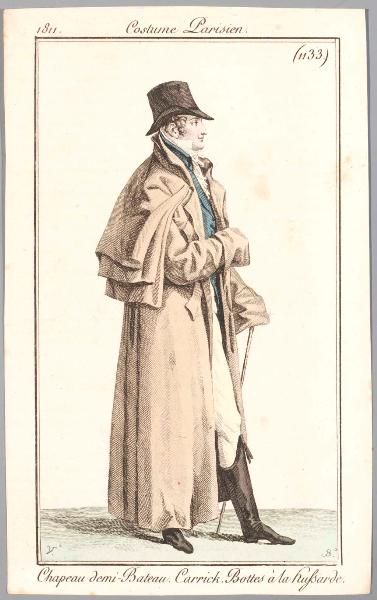
Men also have additional fashion items to keep warm. Voluminous cravats keep the upper chest and neck covered, while leather or deerskin breeches and pantaloons are superior for leg warmth. Men also wore woolens beneath their attire as well as woolen waistcoats. Lastly, tall leather boots protect the feet, leather gloves the hands, and beaver hats the head.
There are many ways for ladies and gentlemen to protect themselves from the elements and still look appropriate, and even fashionable, for Regency outdoor events and colder weather events.
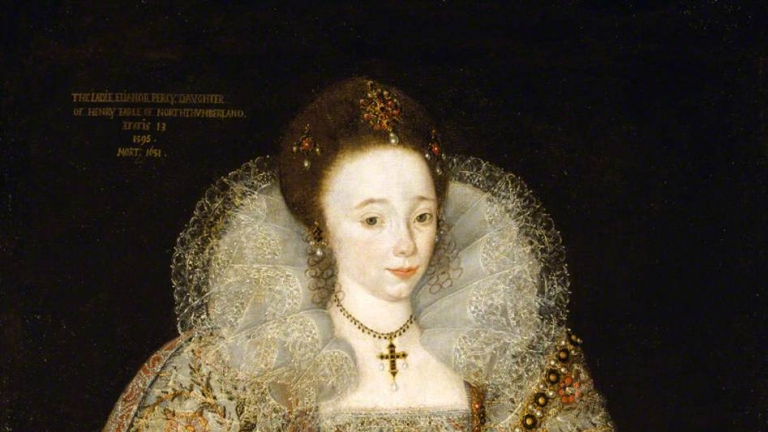
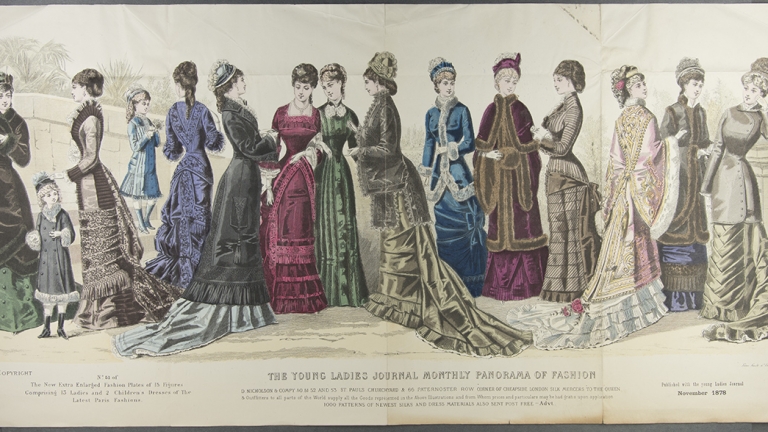
Leave a comment